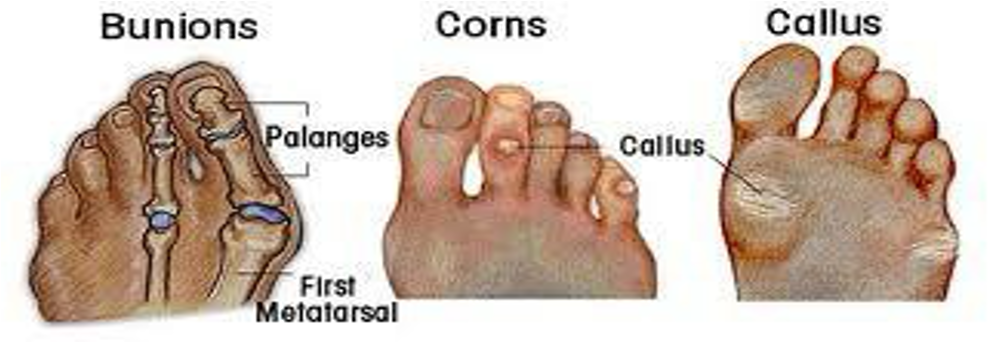Corns & calluses
1/6
There's no tags or description
Looks like no tags are added yet.
Name | Mastery | Learn | Test | Matching | Spaced |
|---|
No study sessions yet.
7 Terms
What are they?
Localised formations of thick, hardened skin on the feet
Aetiology?
Combination of friction and intermittent pressure against the bony prominences of the feet
Frequently caused by inappropriate footwear
Pressure on nerve endings = pain
Hard corns – top of the toes
Soft corns – between the toes
Calluses – Balls of the feet, heel and lower border of the big toe
Clinical features of corns & calluses?
Hard corns
Exhibit a central core of hard grey skin surrounded by a painful, raised, yellow ring of inflammatory skin
Rounded or crecent shape
Small as pin head - lentil size
Over joints, next to nails, between tails, under nails near end of toes
Soft corns
Whitened appearance and remain soft due to moisture being always present between the toes, causing maceration of the corn
Calluses
Depending on the cause and site involved, can range in size from mm to cm
Appear as flattened, yellow-white and thickened skin
Differential diagnosis?
Site will determine the condition
Rule out Bunions:
Due to foot wear or conditions
Look at bony prominent one

Treatment options?
Epidermabration
Removal via physical processes by mechanical aid
Hydrocolloid plasters
Swell in prescence of water
Keratolytic agents
Rehydrates and soften harden skin
Corn/callus comes away after a week
Correctly fitting footwear
Padded inserts/shields around affected area
Practical measures?
Do
wear thick, cushioned socks
wear wide, comfortable shoes with a low heel and soft sole that do not rub
use soft insoles or heel pads in shoes
soak corns and calluses in warm water to soften them
regularly use a pumice stone or foot file to remove hard skin
moisturise to help keep skin soft
Don’t
do not try to cut off corns or calluses at home
do not walk long distances or stand for long periods
do not wear high heels or tight pointy shoes
do not go barefoot
When to refer?
you have diabetes
you have heart disease or problems with your circulation
it bleeds, or has any pus or discharge
it has not improved after treating it at home for 3 weeks
the pain is severe or stopping you doing your normal activities